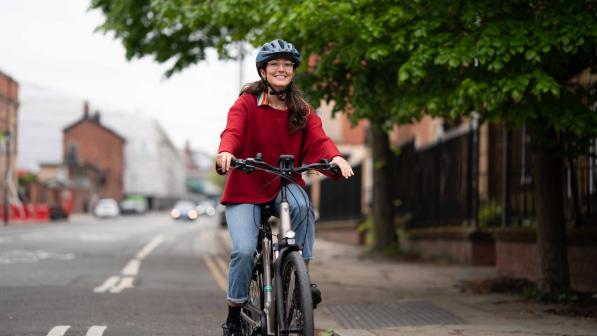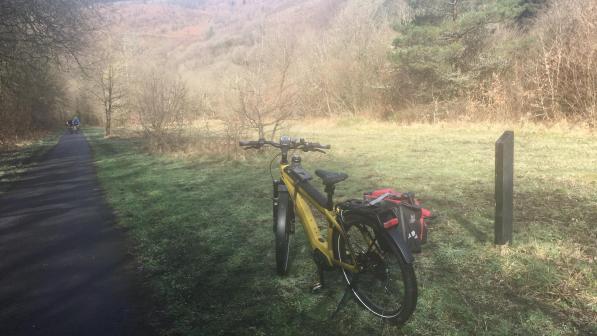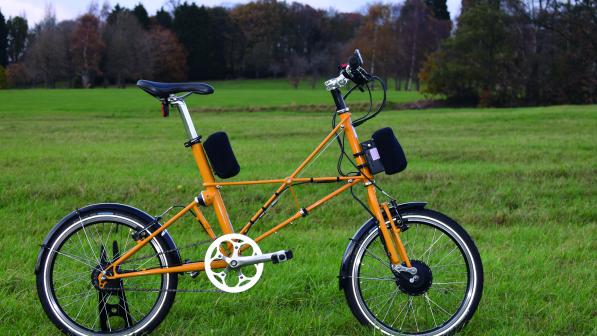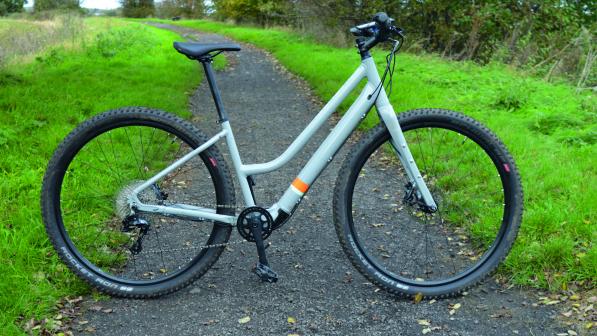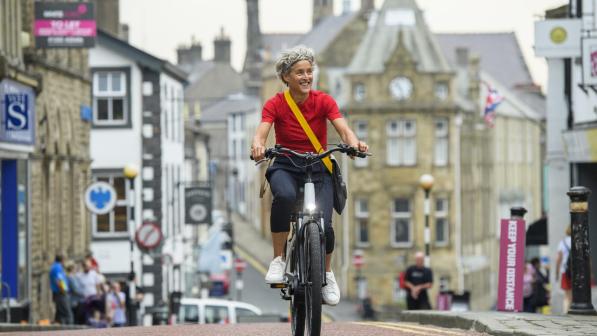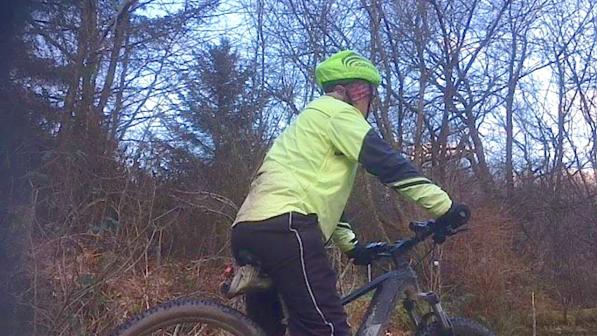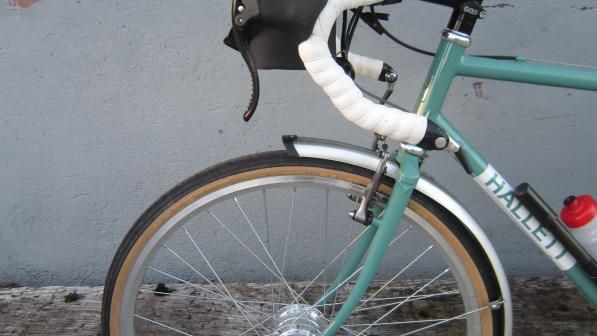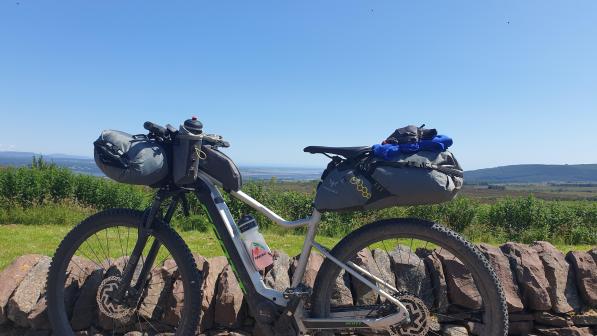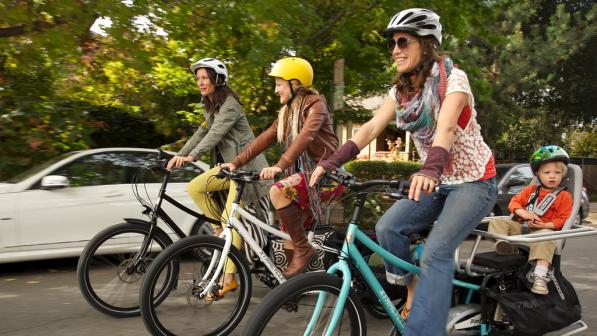Power up: Switch on to e-bikes

E-bike sales in the UK are booming, to such an extent that many models can be hard to find right now. And the UK is a late adopter: on the continent, e-bike sales have been growing at an accelerating rate for many years. Today in the Netherlands one bike in every three sold is an e-bike, and assisted bicycles make up more than half the total bike market in terms of value.
Electric bikes have many advantages. They can increase the range you can cycle or make a long daily commute less arduous. They can allow you to keep up with fitter friends or family members on group rides. If you only do the climbs for the fun of the downhills, they can make the climbs fun too!
But isn’t it cheating? Well, that depends. If you’re pinning a number on your back to race, and e-bikes aren’t allowed, then yes, it’s cheating. If you’re chasing KOMs on Strava and pretending you did it all under your own steam, then yes, that’s cheating. But you can’t cheat at going to work or the shops. And you can’t cheat at having fun! And as anyone that’s spent any time on e-bikes will tell you, there’s a lot of fun to be had.
What is an e-bike?
Most of the e-bikes you’ll find for sale in the UK are EU-legal pedelecs. The UK actually has its own e-bike law but has mostly fallen into line with the EU over the past decade. The EN15194 regulations for pedelec bicycles are pretty dense but the main headlines are that, to be legal, an e-bike must:
- have a motor with a continuously rated power of 250W or less;
- be assisted only when the rider is turning the pedals; and
- have a maximum assisted speed of 25km/h (15.5mph).
Any bike that meets these criteria is regarded as a pedal bicycle in the eyes of the law and enjoys the same privileges.

You can ride an e-bike anywhere you’d ride a normal bike: on the road, on a cycle path or shared-use path, or on a bridleway or byway. You don’t need to be taxed or insured, wear any specific safety equipment, or have any formal training. However, the UK differs from the EU in that you need to be 14 years of age to legally ride an e-bike.
The EU also has two other standards: L1e-A (not exceeding 1,000kW or 25 km/h) and L1e-B (not L1e-A, and up to 4kW and 45km/h), which allow for more powerful motors and faster speeds. In reality they’re not much used, and the faster and more powerful e-bikes you can buy tend to be Speed Pedelecs, or S-Pedelecs. There’s no specific EU-wide legislation for these bikes, but mostly they limit motor power to 350W (500W in some countries) and a top speed of 45km/h (28mph). Other requirements vary: the bikes need to be licensed in many countries and display a licence plate, and often are required to have mirrors and a brake light. Usually the rider needs to wear a certified helmet as well.
In the UK there is no law governing S-Pedelecs: anything more powerful than a standard EU pedelec is classed as a moped. That means you’ll need a V5 certificate, a number plate, a VED certificate (e-bikes are zero-rated, of course!), insurance, an MOT, training, and a motorbike helmet in order to ride one legally. As it’s classed as a moped, an S-pedelec is also restricted to the road and byways; you can’t ride one on cycle paths or bridleways.
E-bike motors
Motors for e-bikes fall broadly into two categories. There are hub motors, which form the hub of either the front or rear wheel and drive it directly. And there are mid-motors, which replace the bottom bracket of the bike and drive the transmission. There are advantages and disadvantages to both approaches.
Hub motors are generally cheaper, because they’re less complicated, and they’re easier to retrofit to existing designs of bike, so you’re more likely to see them at the lower end of the market. Mid motors start to appear at about the £1,500 mark. Front hub motors are the cheapest to produce and dominate the very bottom of the market; having the motor weight in the front wheel affects the handling more, though, and can lead to problems with grip and understeer, especially when climbing.
Hub motors can be direct drive (the outer shell of the hub is part of the motor) but more often these days are geared, with a set of reduction gears between the motor and the outer hub shell. This means the motor can run at a higher speed, which tends to improve efficiency and also means the motor size can be reduced.

Mid motors allow you to use the gearing of the bike to keep the motor at a more optimal speed, and they generally use a torque sensor to apply power proportional to the effort you’re putting in; most hub motor systems use a more simple cadence sensor that simply checks for the pedals being turned. For both these reasons, mid motors are usually more efficient. Having the extra weight low down in the middle of the frame is also better for the handling of the bike.
You’ll often see the torque of a motor stated in Newton Metres (Nm). Higher means more powerful, but measurements between different brands and different types of motor don’t always marry up in terms of the way they feel in use. In general, mid motors feel more powerful where it counts most: from a standstill and on steeper climbs.
Batteries
The battery of an e-bike can either be externally mounted – normally on the down tube, behind the seat tube, or in the rear rack – or it can be internal, usually in the down tube. Some conversion kits use a bag, often mounted to the handlebar. As with motors, the lower and more central the battery, the less it will affect the bike’s handling.
You might see an e-bike’s battery capacity written in either Amp-Hours (Ah) or Watt-Hours (Wh). Watt-Hours is simply the Amp-Hour capacity multiplied by the voltage of the system, so a 36V motor system with an 11Ah battery would have
a 396Wh capacity. Watt-Hours is a more useful figure because it’s comparable across all motor systems. Battery capacity varies enormously: lightweight conversion kits can have a capacity of less than 200Wh, while an e-cargo bike with a dualbattery system might be five times that.
It's a good idea to charge the battery indoors if you can, as charging a cold battery (below 5°C) can permanently damage it
Dave Atkinson
The range of an e-bike is affected by a huge range of factors. The size of the battery is an important one, but the motor type, the assistance mode, the rider weight, the hilliness of the ride, and even the ambient temperature will all have a big effect on how far you can go on one charge. If you’re a normal-sized rider, using your e-bike in a mid-power mode on rolling terrain, you can probably expect to use maybe 8-10Wh per kilometre ridden. So a 500Wh battery would give you a 50-60km range. If you’re a bigger rider using higher power settings and scaling some big hills, you might only get half that. And if you’re light and riding on the flat, in a low assistance mode, on a warm day, you might double it.
What to consider
If you’re looking at buying an e-bike, then there are plenty to choose from. Which one is right for you will depend on a number of factors. Also consider…
Weight
Generally, the weight of an e-bike isn’t an issue when you’re riding it as the help from the motor far outweighs the effect of the weight it adds. But if you regularly have to lift your bike – up some steps to your house, for example, or into the car for a mixed commute – then make sure that you can easily lift whatever you pick. A city e-bike can weigh 25-30kg and they’re bulky things to move. Lightweight e-bikes have smaller batteries and less powerful motors but can be 10kg lighter.

Range
The range you need will depend on what you plan to do: make sure you get a bike with a big enough battery to cover your normal riding. If you’re commuting a few miles to work every day then you’ll probably only need to charge your bike once a week. If you have a long or especially hilly commute then it’s often a good idea to keep a spare charger at the office in case you forget to top up the battery at home. The same applies for long leisure rides: there’s no harm slinging the charger in a pannier, and most cafes won’t mind you charging it up while you have your lunch. It’s a good idea to charge the battery indoors if you can, as charging a cold battery (below 5°C) can permanently damage it.
Maintenence
An e-bike needs regular maintenance for the bits that wear out – transmission, brakes, bearings, tyres – just like a normal bike. On top of that, it’s a good idea to get the motor regularly checked. If your bike develops a fault then higher-end systems usually have plug-in diagnostics like your car, so you’ll need to head to an approved service centre. On cheaper systems it’s often more a case of trial and error. As ever with electrics, water is your enemy. Don’t store an e-bike out of doors, and if you’re caught in heavy rain it’s a good idea to keep the bike somewhere warm to dry out if you can.
E-bike types
If you can think of a type of bike, then there’s probably an e-bike version available, with the possible exception of a BMX. Let’s look quickly at the main types of e-bike.
City/trekking bikes
The biggest market for e-bikes by far. City and trekking e-bikes come in many shapes and sizes, and at all price points. Step-through frames are increasingly common because they’re so much easier to mount and dismount around town. Hub gears and belt drives offer very low maintenance. Look for integrated lighting powered by the motor’s battery, good luggage capacity, a decent kickstand, and the option to fit a wheel lock (nurse’s lock) to make it easier to nip into the shops.
Folding bikes
Folding e-bikes have to balance two mutually exclusive goals: to be powerful enough to offer useful assistance but small and light enough to be portable. Batteries tend to be smaller and power reduced. Check you’ll be able to handle the weight of the bike for carrying, and check if the battery is demountable to make the bike easier to handle when folded.
Mountain bikes
Electric mountain bikes generally use mid motors because weight in either wheel unbalances the bike and increases the likelihood of punctures and bent rims. Full suspension on an ‘acoustic’ mountain bike can mean climbing performance is compromised, but that’s not really an issue with a 250W motor on hand, so the longer the suspension travel the better!

Road bikes
Many e-road bikes (though not all) use lighter, lower-power motor systems with smaller batteries. The integration of a motor system into an e-road bike can be so inconspicuous that it takes a keen eye to notice. The lightest builds can be 11kg or less, with the motor system accounting for about 3.5kg of that.
Recumbents/trikes
Any type of recumbent can have assistance added, but trikes work especially well, as the extra weight isn’t really an issue and can actually help with stability. Some e-trikes have batteries up to 4,000Wh and a range of over 600km!
